Review: Roland JU-06A
Roland’s Limited Edition JU-06 provided a Juno-106 experience in a Boutique-sized module. Now comes the JU-06A, a portable, hybrid Juno-60 and 106 combined. Jono Buchanan turns button-pusher.
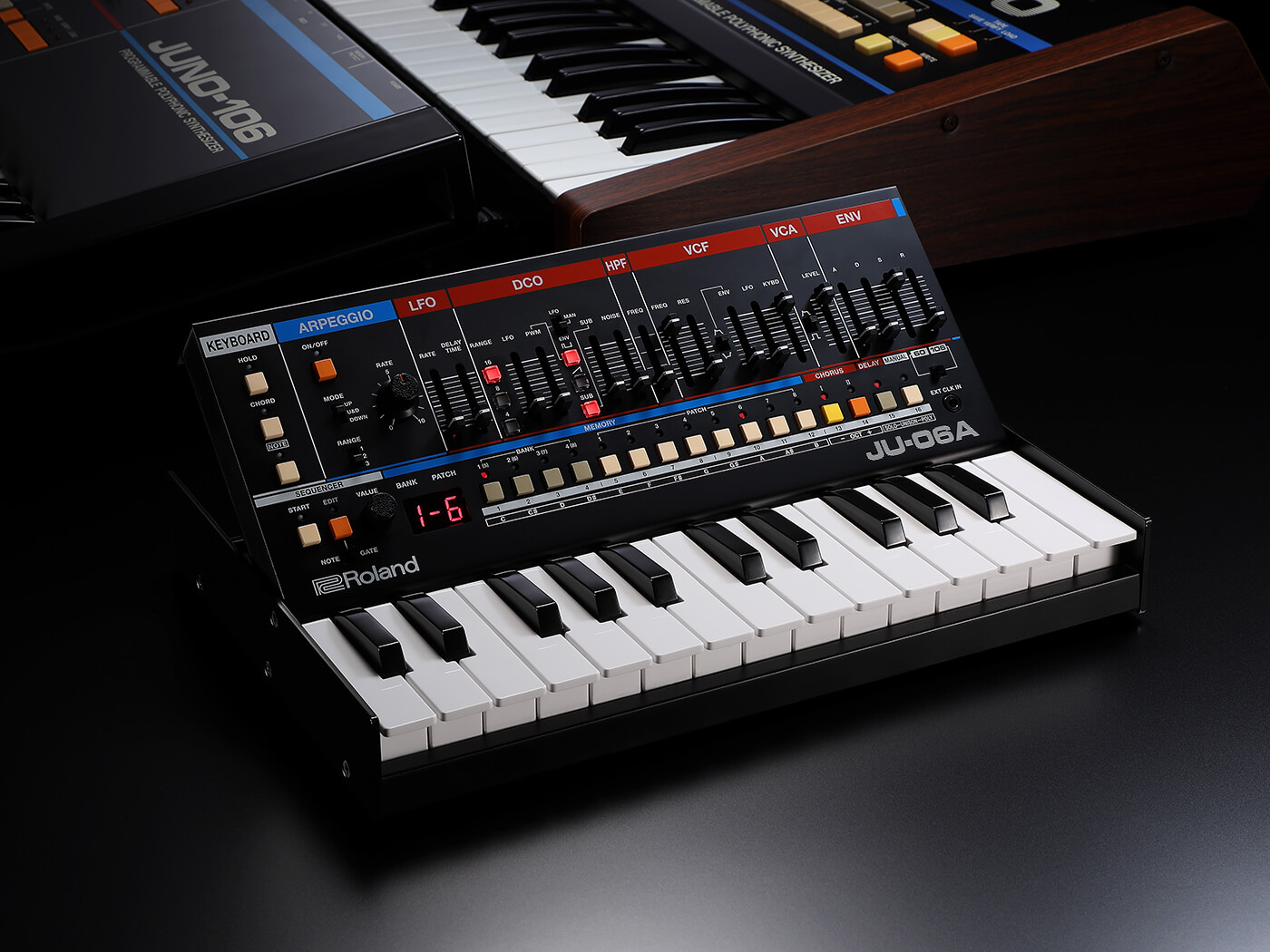
Price $399/£349/€399
Contact Roland
The JU-06 module, from Roland’s Boutique studio, was a limited-edition module released almost three years ago, which offered a tantalising combination of features from Roland’s legendary Juno range of synthesizers. Ostensibly, it purported to provide the ‘sound’ of the Juno 106, though via its livery and featureset, there was more than a smattering of the even-more-coveted Juno-6 and 60 about it, too. Fast-forward to the here and now and the JU-06A becomes its replacement, with a hybrid design to bring the sound of both the Juno-60 and the 106 to your workflow.
For those frustrated by the ‘limited edition’ nature of the original JU-06, no plans have been announced to cap the number of units Roland will manufacture of the JU-06A. Lesson learned, we hope. Like the other modules in the Boutique range, this one can be USB buss-powered (via a mini USB connector) or run from batteries. No USB cable is provided, however, while only two of the required four AA batteries are in the box of the review unit, which seems unnecessarily flirtatious on both counts.
Box of tricks
The front panel will be more familiar to anyone who has spent time with a Juno-6 or Juno-60 than what was offered by the original JU-06. Whereas Bank and Patch selection buttons were opaque/blue before, now they’re the distinctive grey and cream of the original, while the two Chorus modules are restored to yellow and orange.
Most significantly, however, the JU-06A dispenses with the twin ribbon sliders which occupied a significant chunk of the left-hand side of the upper panel and instead – rejoice! – here you’ll now find an Arpeggiator module, which was a glaring omission on the unit’s predecessor. The Arpeggiator’s features echo those of the Juno-60 with Up, Down and Up&Down modes, an up to three-octave range and a Rate dial to control Arpeggiation speed. It won’t surprise you to learn that the Rate dial can be clocked to tempo and, indeed, the bottom right-hand corner of the JU-06A provides an External Clock Input, so you’re compatible with all things modular.
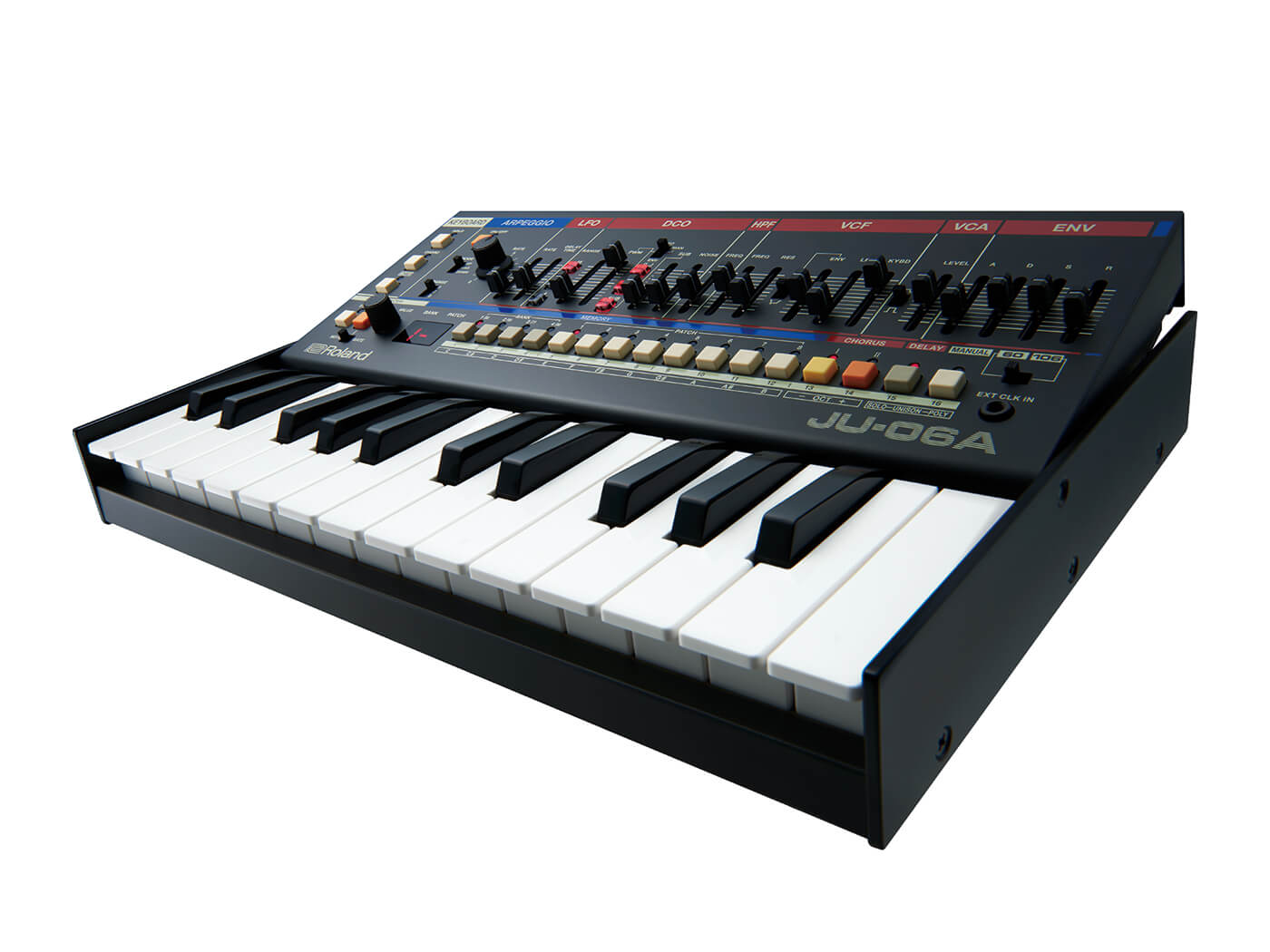
To the left of the Arpeggiator is a Keyboard pane, which allows you to play the JU-06A if you aren’t running the sequencer (of which more shortly) or triggering notes over MIDI/USB. You can play chords or individual notes, whilst a ‘Hold’ button provides sustain to ensure you don’t have to keep triggering notes as you adjust parameters.
This does, however, raise the unaddressed spectre which was the biggest criticism of the original JU-06 – that its voice count was limited to four. The ‘6’ in Juno ‘6’, ‘60’ and ‘106’ was representative of each synth’s six-voice polyphony, so the fact that the JU-06A remains a four-voice instrument will infuriate not only Roland purists but also those who like to play pads which are richer than four voices deep.
I understand that additional voices mean extra processing power and therefore, presumably, more cost – but to make the four-voice decision for a second time does rather suggest that Roland hope you might buy two of these to satisfy your polyphonic needs. Which is frustrating to a point that’s hard to ignore. Taking a deep breath, to put that gripe aside and returning to the upper panel, each of the ‘red’ module headers offers control over a different part of the sound engine.
From left to right, these are the LFO, the DCO, the HPF, VCF, VCA and Envelope sections. Within each of these modules, functionality remains as it did on the original JU-60 with one exception; there are now three ways in which the PWM slider can affect the sound. In ‘MAN(ual)’ mode, it adjusts the value of the pulse width. In ‘LFO’ mode, it varies the depth of modulation introduced by the LFO. Lastly, in ‘ENV(elope)’ mode, it uses the Envelope shape to adjust Pulse Width. Just as the Juno-106 removed this third function from the Juno-6 and 60’s original design, the JU-06 removed it, too, so it’s great to see it back this time. It’s important, as it allows you to introduce pulse-width modulation during, for instance, the Release phase of a sound, allowing you to morph and shape sounds as they decay.
Portable patterns
Two more significant additions complete the front-panel tour. Firstly, a Delay effect is added next to the Chorus while, perhaps most significantly, Roland acknowledges the sonic differences between the Juno-60 and Juno-106 by offering a rocker switch to toggle between their respective sound engines.
These are significant, as you’ll discover when you change gears mid-way through a sequence, a held Arpeggiation pattern or even when you’re just triggering notes and sound designing. It doesn’t quite add up to two modules for the price of one and yet Roland could easily have omitted this switch altogether and provided the functionality of a boutique Juno-60 module alone. That they haven’t is a definite and unexpected plus.
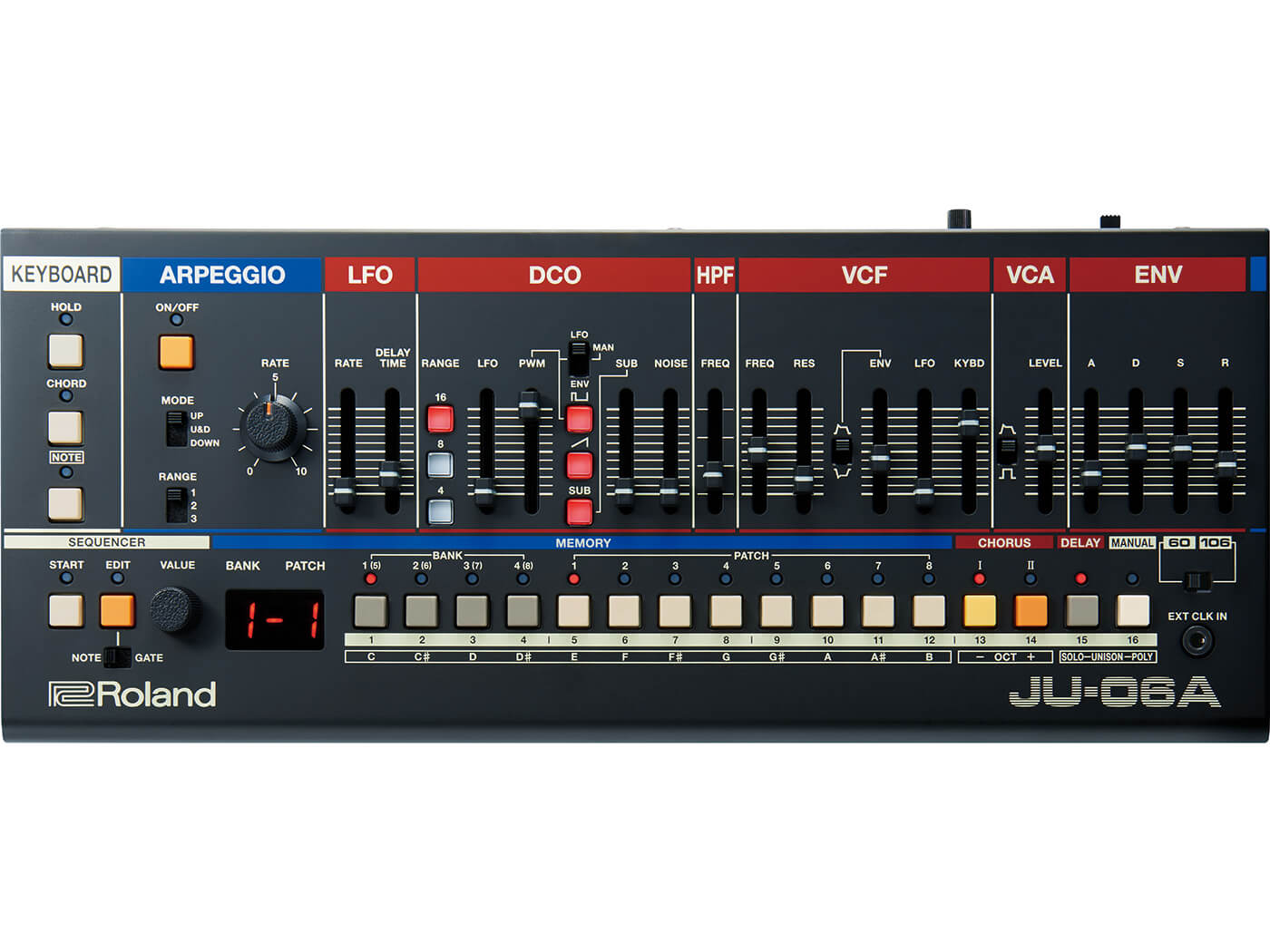
The JU-06A’s sequencer is likely to win the module a lot of fans. Patterns can be started and stopped in the bottom left-hand corner, while the button next to it allows you to edit either notes or Gate time, depending on the toggle switch below. In either mode, the Value dial lets you scroll up/down to the Pitch or Note Length of your choice, with the sequencer burbling along beautifully as you do. You can enter notes in step-time if you prefer, while up to 16 patterns can be held in memory to be activated on the fly. Toggling between these simply requires you to hold down the Sequencer Start button while pressing one of the numbered buttons along the bottom.
Future retro classic
Potential purchasers of the JU-06A will be split into two distinct groups. On one side, there will be those who know the sound of the original units and who would love to get their hands on them again but understandably recoil at exorbitant second-hand prices. On the other, a new collection of producers who know the Juno series by reputation and their favourite records alone will simply wonder whether the sounds offered here deserve to grace their tracks.
The good news is that the JU-06A probably does enough to satisfy both camps. The Chicago house weight and depth of the classic Juno-60 bass is here, as are the ethereal pads so adored by composer/producers such as Ólafur Arnalds. The sequencer’s capabilities cut through any mix and there is a richness and depth which more than echoes (if not completely matches) the original Juno hardware. The biggest, unavoidable hurdle remains Roland’s use of a four-voice sound engine, which is genuinely restrictive but, if you’re drawn to this machine primarily for its great-sounding pattern sequencer or can restrict yourself to fewer notes in your chords, this will be a much less significant consideration. At the very least, the JU-06A deserves your serious consideration – it’s huge fun and sounds great.
Do I really need this?
The sound of the Juno range has endured and remained in demand for a number of reasons. Warm, round basses, a biting filter, ethereal, barely there pads… it can do it all. You’ll find Juno-60s in the studios of house musicians, film composers and hit-writing songsmiths alike and, without question, the JU-06A is a significant step up in class and capability from its predecessor.
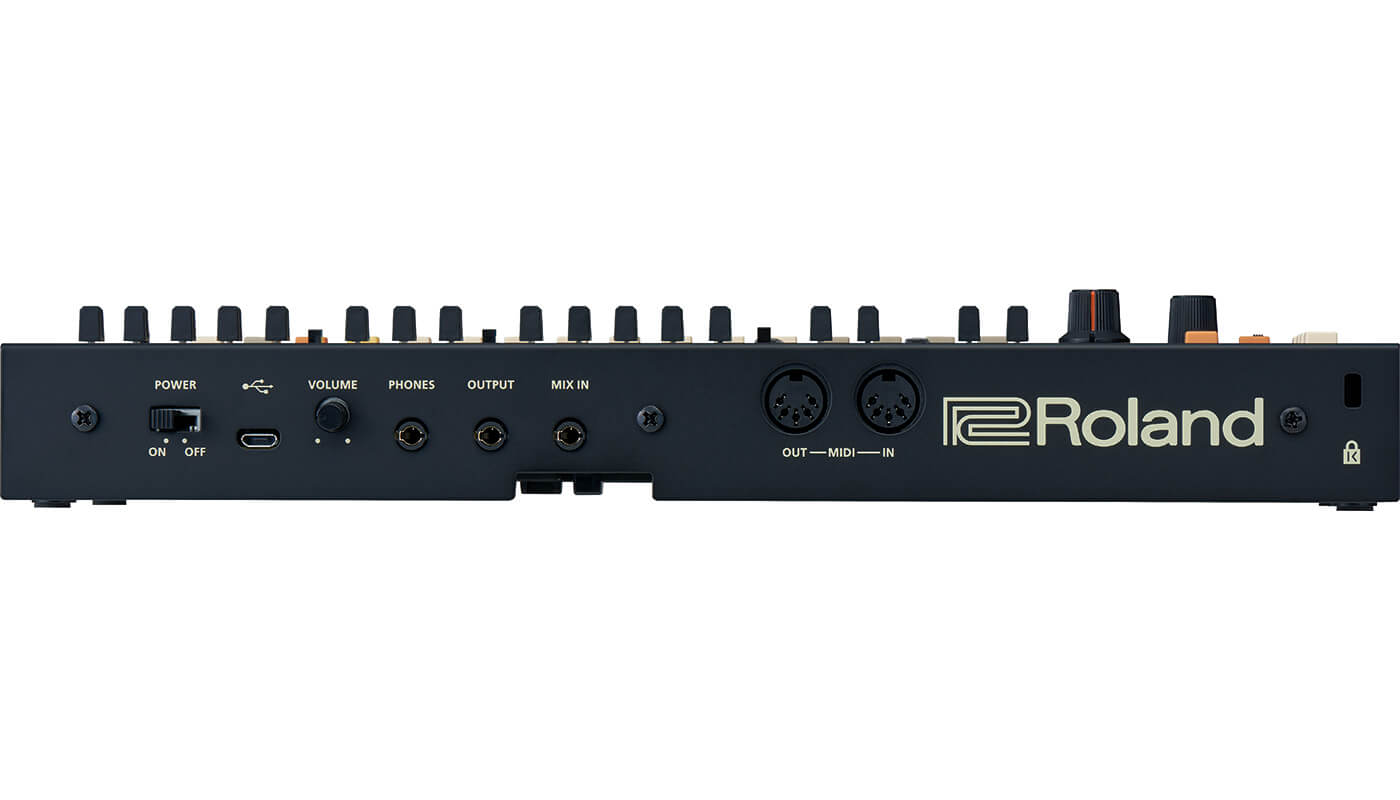
If you want a module which works well as an all-rounder but whose sound has lots of personality, you’ll find plenty to enjoy. Throw in its hybrid sonic engine, a capable, inspiring pattern sequencer, all the portability you could want (including battery power and an internal speaker) and the JU-06A has plenty to recommend it. It’s a great vibe machine too; when inspiration is low, it’ll get the juices flowing.
Key features
- Polyphony: 4 voices
- Juno-60 and 160 ‘hybrid’ sound engines
- DCO, LFO, HPF, VCF, VCA and envelope stages
- Arpeggiator and pattern sequencer
- MIDI In/Out
- External clock input
- Headphone and line outputs
- Audio input
- Chorus and delay effects
- Internal speaker
- Power supply: batteries, USB
- Dimensions (W x D x H): 300mm x 128mm x 49mm
- Weight: 1kg
Alternatives
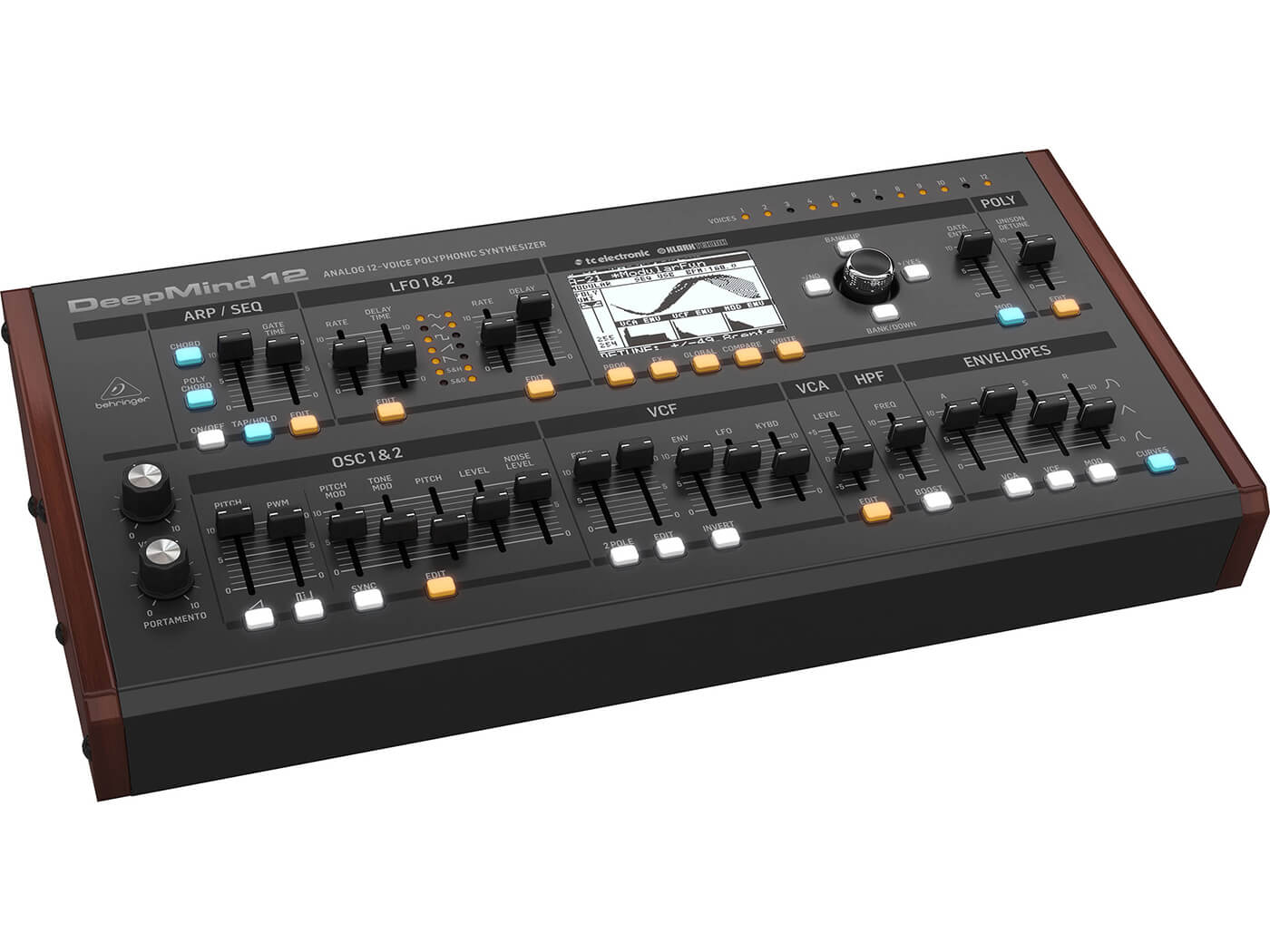
If the voice restriction of the JU-06A is a red line, cut loose with Behringer’s 12-voice desktop module instead. It’s more expensive but offers two oscillators per voice, two LFOs, three envelopes, a 32-step sequencer and an all-analogue signal path.
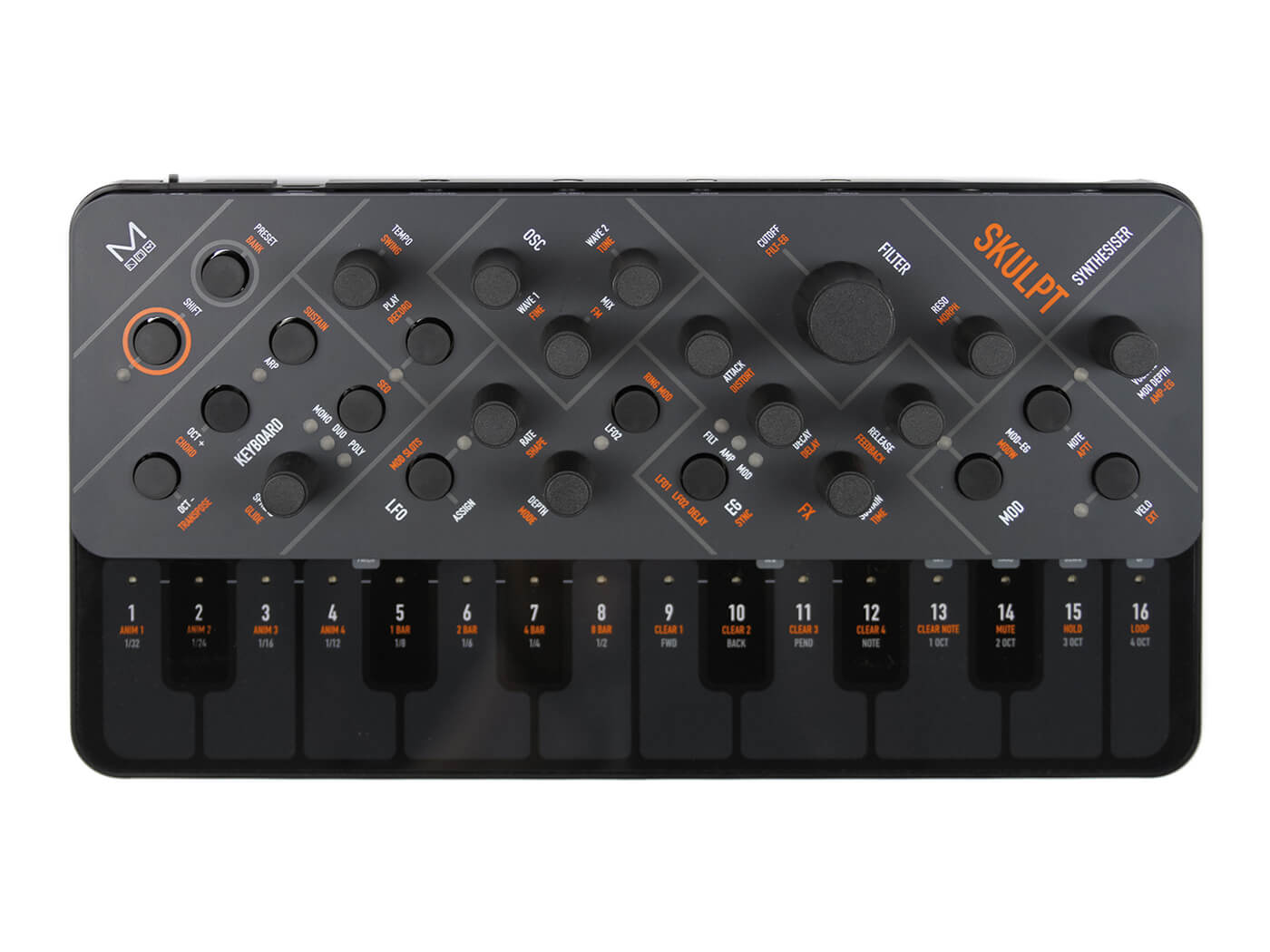
Modal Electronics’ Skulpt reached us by way of a Kickstarter project, but how glad we are that it arrived. Another four-voice desktop module, but one which packs in 32 oscillators, software control over USB and a 256-note sequencer. Its interface takes a little getting used to.